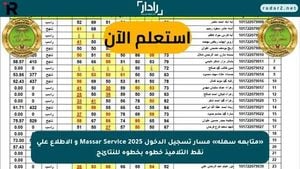In a significant advancement for assistive technology, researchers have developed a wearable obstacle avoidance device (WOAD) that aims to enhance the mobility of visually impaired individuals. The device integrates a set of self-developed glasses with a common smartphone, enabling users to navigate their environments more safely and confidently.
The device, weighing approximately 400 grams—including an 80-gram battery—uses video and depth data to perceive its surroundings comprehensively. It features a depth-aided video compression module, which reduces data transmission delays to the smartphone, ensuring quick and efficient obstacle detection.
For visually impaired individuals, obstacle avoidance has proven to be a challenging task due to many unpredictable barriers in their paths, such as fast-moving pedestrians or the sudden appearance of obstacles. According to the World Health Organization, over one billion people globally are affected by visual impairments, impacting their independence and safety.
"Despite the available navigation technologies, independent travel remains extremely challenging, especially due to ubiquitous obstacles," noted the authors of the article. This context highlights the urgent need for advanced solutions like the WOAD.
The device operates under specific principles to assist users effectively: it must be responsive, reliable, durable, and usable. For instance, it ensures an end-to-end delay of less than 320 milliseconds to provide timely alerts about potential collisions. Furthermore, it maintains a 100% collision avoidance rate across various scenarios, demonstrating its reliability through rigorous testing.
To enhance the user experience, the WOAD incorporates both auditory and tactile feedback mechanisms. This allows for real-time alerts regarding the presence and proximity of obstacles, conveyed through sound and vibrations. In practical tests, the glasses were successfully used by blind volunteers, navigating crowded streets and other challenging environments.
The unique blend of a custom hardware processor—specifically a field-programmable gate array (FPGA)—and a mobile smartphone fosters a lightweight yet powerful solution for obstacle detection. The FPGA aids in processing vast amounts of data while optimizing power consumption, resulting in a long-lasting operational capability of around 11 hours.
The researchers conducted extensive tests over seven months, involving 12 visually impaired volunteers in diverse indoor and outdoor conditions. The device proved effective in detecting both stationary and moving obstacles, exceeding speeds of 10 meters per second in nighttime scenarios.
Testing scenarios included traversing busy malls, crossing low-visibility intersections, and avoiding sudden obstacles like pedestrians. The device navigated these environments with impressive results, ensuring that collision avoidance rates remained steady at 100% while maintaining the necessary responsiveness expected from assistive technology.
"This technology aims to revolutionize obstacle detection for visually impaired individuals, integrating state-of-the-art AI techniques with everyday assistance tools," the authors emphasized.
In conclusion, the development of the WOAD marks a crucial step towards enhancing independence for visually impaired people. By leveraging cutting-edge technology, this system not only tackles the critical issue of navigation safety but also opens up possibilities for future applications in different fields, such as robotics and autonomous vehicles. The researchers hope to refine the design even further, making the WOAD more compact and user-friendly, thus encouraging wider acceptance and use among potential beneficiaries.




